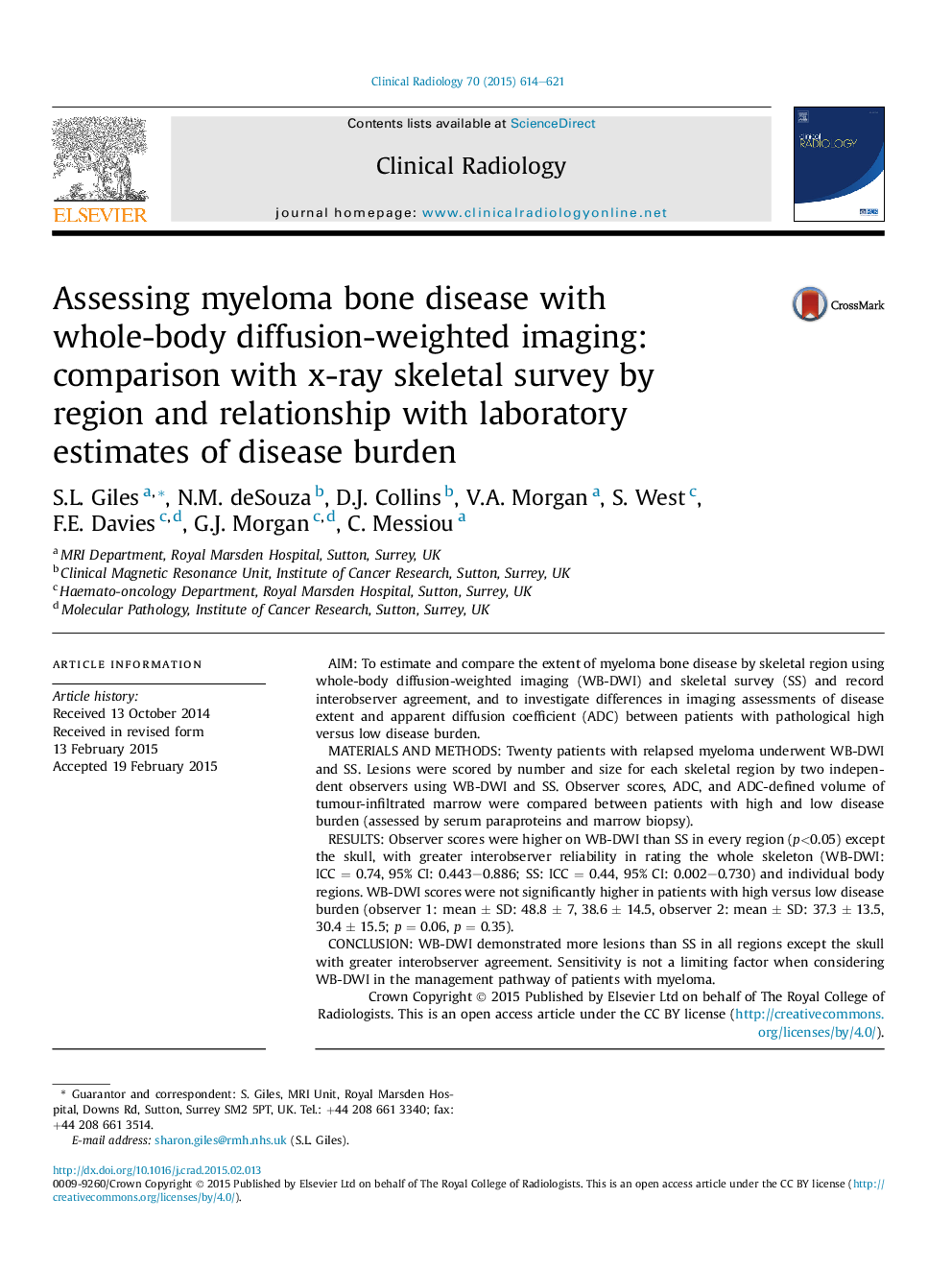| Article ID | Journal | Published Year | Pages | File Type |
|---|---|---|---|---|
| 6190866 | Clinical Radiology | 2015 | 8 Pages |
â¢WB-DWI demonstrated significantly more lesions than SS in all body regions except the skull.â¢Inter-observer agreement was better when assessing WB-DWI compared to SS.â¢Sensitivity is not a limitation of WB-DWI in myeloma.
AimTo estimate and compare the extent of myeloma bone disease by skeletal region using whole-body diffusion-weighted imaging (WB-DWI) and skeletal survey (SS) and record interobserver agreement, and to investigate differences in imaging assessments of disease extent and apparent diffusion coefficient (ADC) between patients with pathological high versus low disease burden.Materials and methodsTwenty patients with relapsed myeloma underwent WB-DWI and SS. Lesions were scored by number and size for each skeletal region by two independent observers using WB-DWI and SS. Observer scores, ADC, and ADC-defined volume of tumour-infiltrated marrow were compared between patients with high and low disease burden (assessed by serum paraproteins and marrow biopsy).ResultsObserver scores were higher on WB-DWI than SS in every region (p<0.05) except the skull, with greater interobserver reliability in rating the whole skeleton (WB-DWI: ICC = 0.74, 95% CI: 0.443-0.886; SS: ICC = 0.44, 95% CI: 0.002-0.730) and individual body regions. WB-DWI scores were not significantly higher in patients with high versus low disease burden (observer 1: mean ± SD: 48.8 ± 7, 38.6 ± 14.5, observer 2: mean ± SD: 37.3 ± 13.5, 30.4 ± 15.5; p = 0.06, p = 0.35).ConclusionWB-DWI demonstrated more lesions than SS in all regions except the skull with greater interobserver agreement. Sensitivity is not a limiting factor when considering WB-DWI in the management pathway of patients with myeloma.
